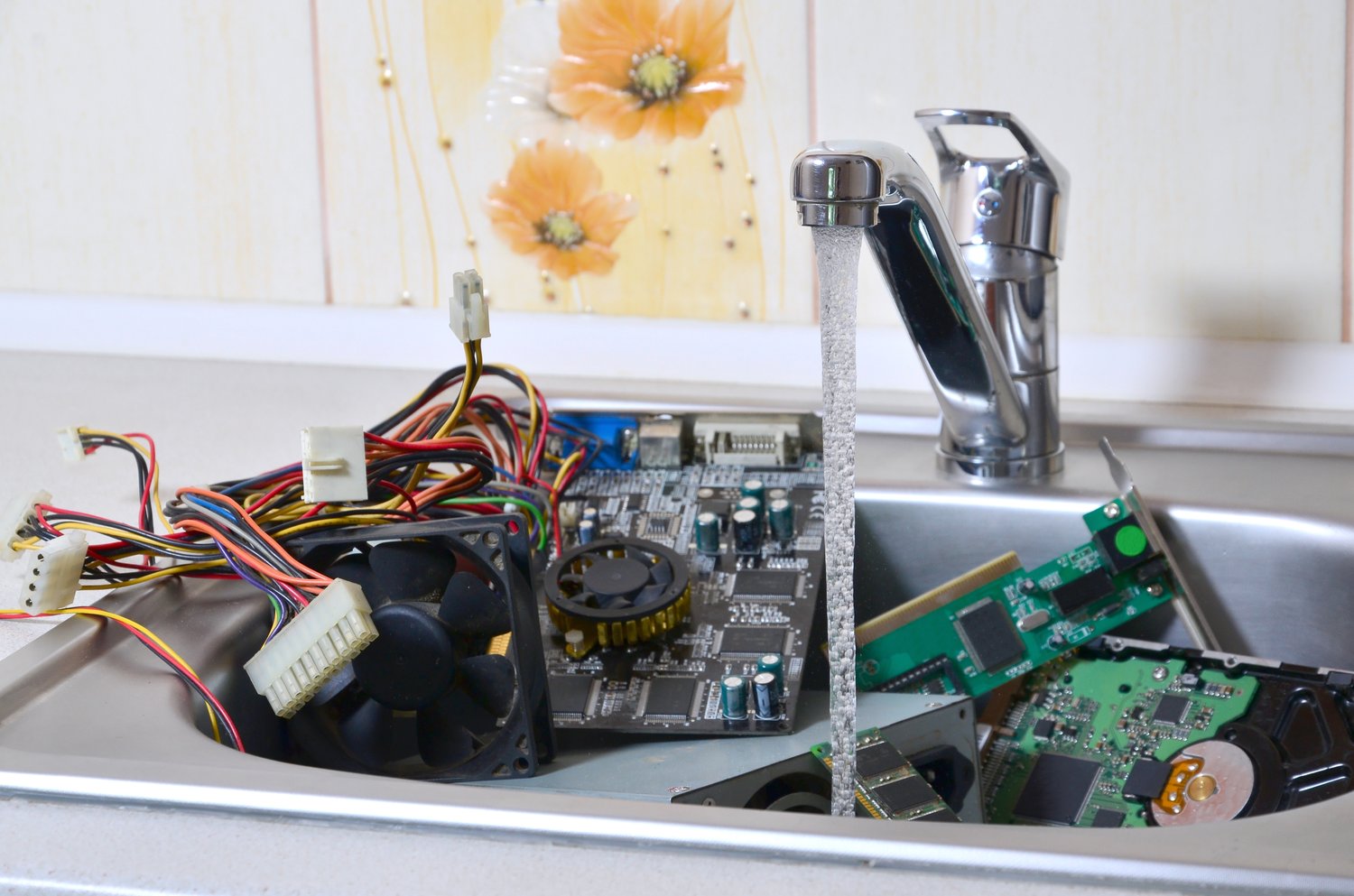Imagine you’re in the middle of a busy evening service, and suddenly your commercial dishwasher stops heating, leaving you with a pile of dirty dishes and a kitchen staff scrambling to cope. Understanding why your dishwasher isn’t heating up can save you a lot of hassle and keep your operation running smoothly. In this comprehensive guide, we’ll dive into the intricacies of your dishwasher’s heating process and offer effective solutions to common problems, ensuring your kitchen remains fully operational.
- Explore the essential components responsible for your dishwasher’s heating and identify typical causes of temperature failures.
- Learn to assess and troubleshoot faulty heating elements by locating them efficiently within your dishwasher.
- Understand how malfunctioning thermostats and switches can impact heating and gain insights into resolving these issues.
- Investigate the critical role of temperature sensors in maintaining heat and find out how to check and replace faulty sensors.
- Discover methods to address electrical wiring and circuit problems that may lead to heating malfunctions, ensuring safe and proper repairs.
By the end of this article, you’ll be equipped with the knowledge to diagnose and fix common heating issues in dishwashers, preserving your kitchen’s efficiency and minimizing downtime. This guide will empower you with valuable maintenance tips and encourage timely professional assistance when necessary, ensuring the seamless operation of your catering business.
Understanding Why Your Dishwasher Is Not Heating
When your dishwasher is not heating water, it can compromise the effectiveness of your cleaning cycle. Understanding the essential elements involved in the heating process is crucial for diagnosing and resolving temperature failures.
At the core of your dishwasher’s heating system are components like the heating element, thermostat, and temperature sensors. These components work together to ensure that water reaches optimal temperatures for effective sanitization.
A typical culprit behind temperature issues is a faulty heating element. If the element fails, the dishwasher will struggle to heat water adequately. Another potential issue is a defective thermostat, which may falsely signal that the desired temperature has been reached.
Additionally, errors in temperature sensors can mislead the system, leading to insufficient heating. Internal wiring problems or disrupted connections can also affect the heating process, causing inconsistencies in temperature regulation.
Recognizing the signs that these elements are compromised allows you to pinpoint the source of the problem and implement effective dishwasher repair strategies. Regular maintenance and timely checks of these critical components can prevent frequent heating failures and enhance your appliance’s performance.
Identifying and Testing Faulty Heating Elements
The heating element in your dishwasher plays a decisive role in raising water temperature for optimal cleaning. To determine if a heating element is at fault, you must first locate it within the appliance.
Typically, the heating element is situated at the base of the dishwasher’s interior. It often resembles a long, thin tube made of metal. Before beginning any assessment, ensure the dishwasher is disconnected from the power supply to guarantee safety during inspection.
Testing the heating element can be carried out using a multimeter. Set the multimeter to the resistance measurement setting (ohms). A functioning heating element should show a resistance reading indicating continuity. If the multimeter shows open or infinite resistance, the element is likely burnt out and requires replacement.
Replacing a faulty heating element with a compatible part can restore your dishwasher’s heating efficiency. It’s important to consult your dishwasher’s manual for detailed replacement instructions or seek professional repair services if you’re unsure about conducting the repairs yourself.
Regular monitoring of the heating element’s performance and ensuring it’s debris-free can prevent further issues, maintaining your dishwasher’s ability to clean dishes effectively.
Dishwasher Not Heating? Repair Guide for Thermostat and Switch Issues
When your dishwasher fails to heat water effectively, thermostats and switches could be at the heart of the issue. These components play a vital role in regulating the heating cycle and ensuring optimum water temperature.
The thermostat is responsible for monitoring and adjusting the water temperature within the dishwasher. If it fails, the machine may be unable to heat to the desired level. The switches, often located in the dishwasher’s control panel, help initiate the heating process and manage power flow to the heating elements.
To troubleshoot thermostat and switch issues, start by gaining access to the dishwasher’s control panel where these components are usually installed. Ensure the appliance is unplugged before proceeding with any repairs for safety. Use a multimeter to test the continuity of the thermostat and switches. If either lacks continuity, it’s a clear indication of a faulty component that requires replacement.
Regular maintenance, including routine checks and timely replacements, is crucial. This ensures that your dishwasher runs efficiently and avoids common heating troubles. Consider consulting with a professional if the problem persists, as complex issues with thermostats and switches may require expert attention.
Checking and Replacing Temperature Sensors
The temperature sensor in your dishwasher is essential for maintaining the proper heating levels during wash cycles. It provides accurate readings that allow the machine to adjust the heat according to the selected program. A malfunctioning sensor can lead to inadequate water temperatures, affecting the dishwasher’s performance.
To check the temperature sensor, locate it near the heating element. Again, ensure the appliance is unplugged to avoid electrical hazards. Use a multimeter to measure resistance. Compare the readings to the manufacturer’s specifications, which are often detailed in the appliance’s manual.
If the sensor does not match the specified resistance range, it should be replaced. When replacing, ensure the new sensor is compatible with your specific dishwasher model for optimal performance.
Precise temperature control is crucial for effective cleaning and sanitation in dishwashing. Therefore, understanding and maintaining temperature sensors can significantly prolong your appliance’s lifespan and improve its efficiency.
Dishwasher Not Heating? Repair Solutions for Wiring and Circuit Problems
Experiencing dishwasher heating issues often ties back to underlying wiring and circuit complications. Understanding the electrical framework within your appliance is crucial for effective troubleshooting.
Faulty Wiring and Loose Connections
One common issue is faulty wiring or loose connections. Over time, wires can degrade due to moisture exposure or simple wear and tear. Damaged wires may prevent power from reaching the heating element, causing the dishwasher to remain cold. Inspect the wiring thoroughly for any visible signs of damage or wear. Tighten any loose connections you encounter, ensuring all connections are secure and stable.
Testing the Circuit Connection
Circuits play a vital role in maintaining power flow throughout the dishwasher. A multimeter can be a valuable tool for checking if the circuits are functioning as expected. By testing the continuity, you can identify any breaks in the circuit that interrupt the electrical flow. Repairing or replacing worn-out circuit connections can restore your dishwasher’s heating capabilities, ensuring it operates efficiently.
Handling Electrical Repairs Safely
When dealing with electrical repairs, safety should be your highest priority. Always disconnect your dishwasher from the power supply before inspecting or repairing any electrical components. This precaution prevents potential injuries from accidental electric shocks. If you’re unsure or uncomfortable with the repair process, consider consulting a professional technician for safe handling.
By methodically examining wiring paths and circuit connections, you can address the core reasons why your dishwasher might not be heating. These steps will not only resolve the immediate problem but also enhance your appliance’s longevity and efficiency, saving you from future headaches and repair costs.
Frequently Asked Questions About Dishwasher Heating Issues
Why is my dishwasher not heating?
- Faulty heating element: The element might be broken.
- Thermostat issues: Ensure it is functioning properly.
- Electrical problems: Check wiring and circuits.
How do I check if the heating element is faulty?
Use a multimeter to test the element for continuity. Replace if there is no reading.
What role does the thermostat play in dishwasher heating?
The thermostat regulates the temperature, ensuring water is heated efficiently.
Can a broken sensor cause heating issues?
Yes, a malfunctioning temperature sensor can prevent water from reaching the correct temperature.
When should I seek professional help?
- If the problem persists after troubleshooting.
- When unsure about electrical repairs.





